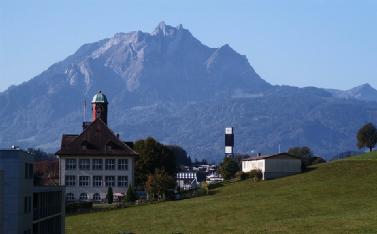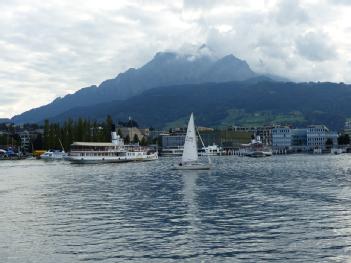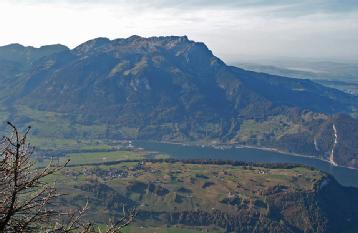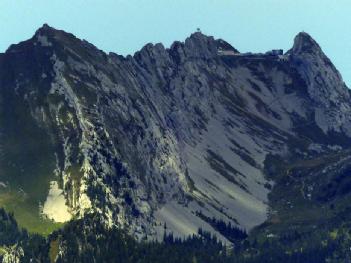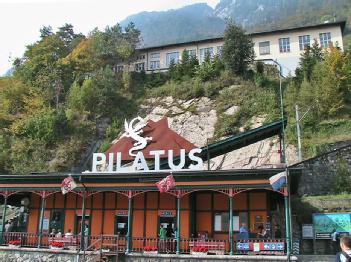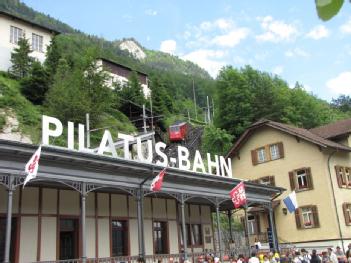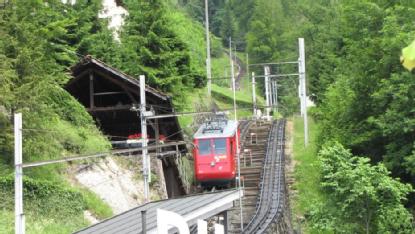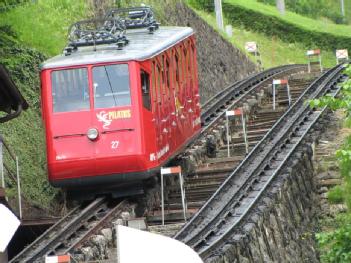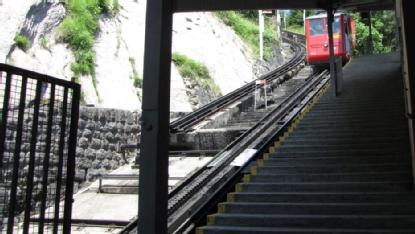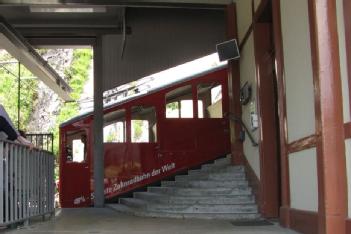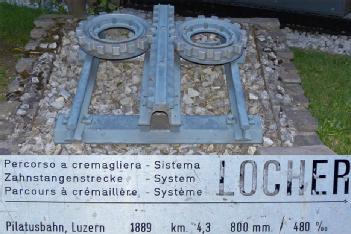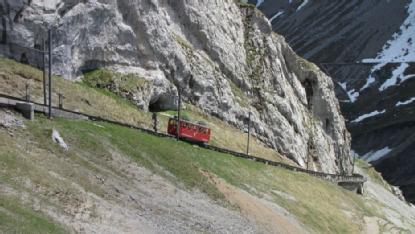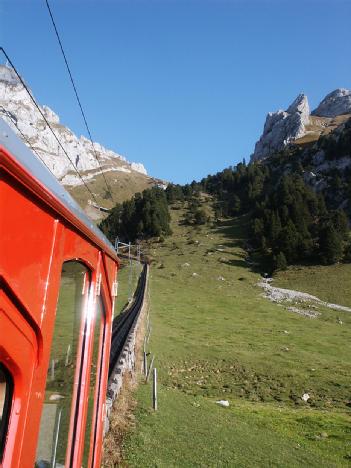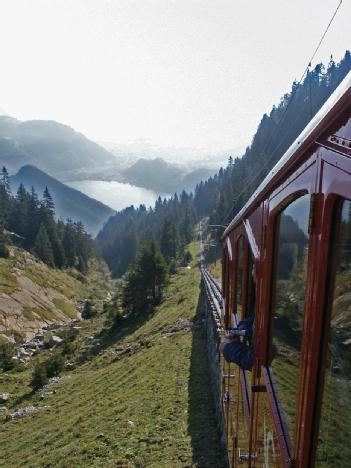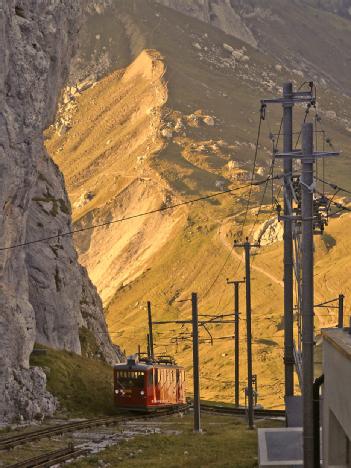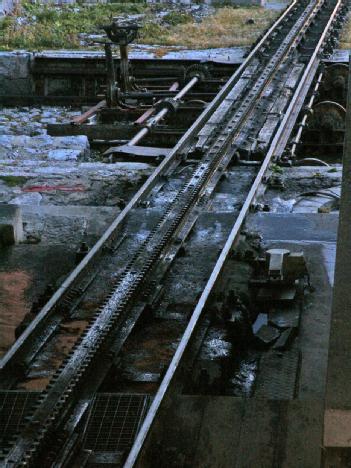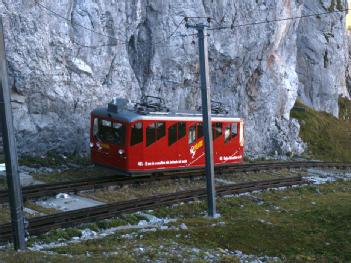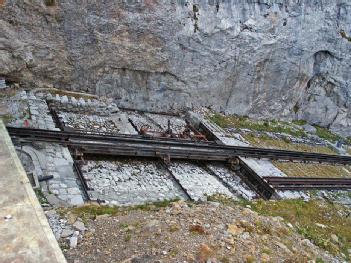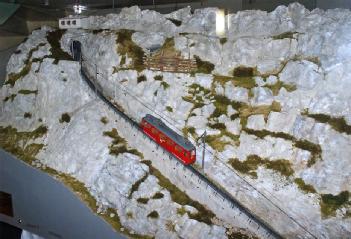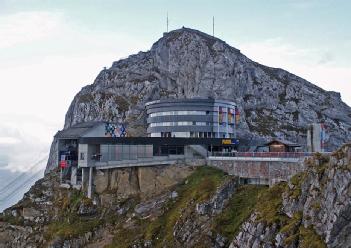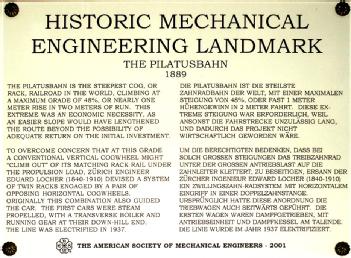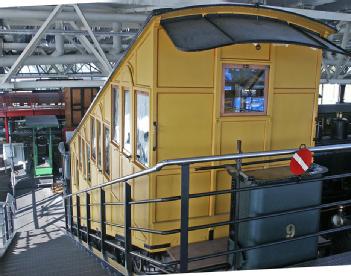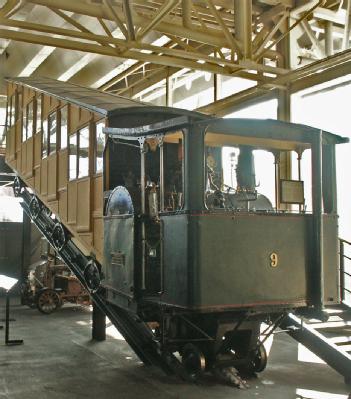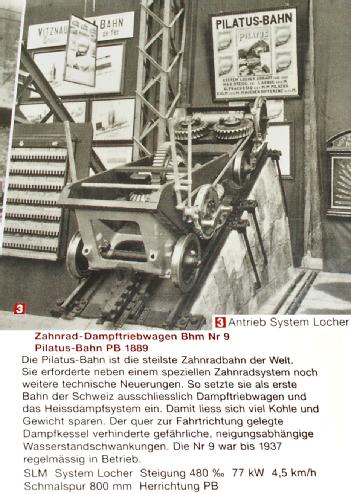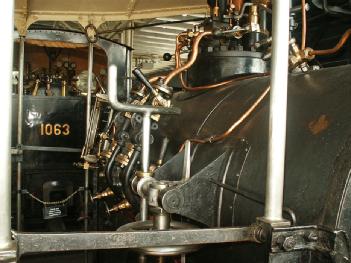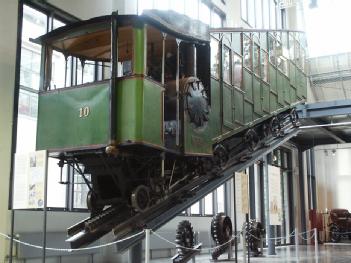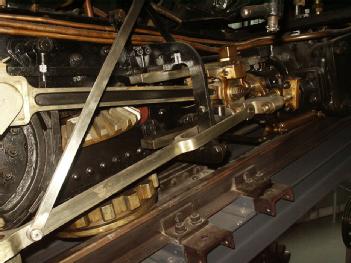
 |
Pilatusbahn |
6053 Alpnachstad, Switzerland (Obwalden) |
|
| Address |
Brünigstrasse 2
|
| Floor area | unfortunately not known yet |
Mountain Railways & Cableways
- Historic Engineering Landmarks
|
Opening times
|
Zahnradbahn: ca. Anfang/Mitte Mai bis Mitte November
|
||||||||
|
Status from 12/2017
|
siehe: www.pilatus.ch/buchen/bergbahnen-preise |
||||||||
| Contact |
|
||||||||
| Homepage | www.pilatus.ch | ||||||||
| Location / Directions |
Alpnach is served by Alpnach Dorf station and Alpnachstad station on the Brünig line, an inter-regional narrow-gauge railway from Interlaken to Lucerne. The half-hourly Lucerne S-Bahn S5 service between Giswil and Lucerne stops at both stations, whilst the hourly InterRegio train between Interlaken and Lucerne normally stops only at Alpnach Dorf station. Alpnachstad station is also the terminus of the Pilatus Railway to the summit of Mount Pilatus, and is also served by Lake Lucerne shipping services of the Schifffahrtsgesellschaft des Vierwaldstättersees (SGV), providing an alternative connection to Lucerne and other lakeside communities The Pilatus Railway runs from Alpnachstad, on Lake Lucerne, to a terminus near the Esel summit of Pilatus at an altitude of 2,073 m (6,801 ft). |
| Description | From Wikipedia, the free encyclopedia: History Then Eduard Locher, an engineer with great practical experience, proposed an alternative project with the maximum grade increased to 48%, cutting the distance in half. Conventional systems at the time could not negotiate such gradients because the cogwheel that is pressed to the rack from above may, under higher gradients, jump out of engagement with the rack, eliminating the train's driving and braking power. Instead, Locher placed a horizontal double rack between the two rails with the rack teeth facing each side. This was engaged by two flanged cogwheels mounted on vertical shafts underneath the car. This design eliminated the possibility of the cogwheels climbing out of the rack, and prevented the car from toppling over, even under severe cross winds common in the area. The system was also capable of guiding the car without the need for flanges on the wheels. Indeed, the first cars on Pilatus had no flanges on running wheels, but they were later added to allow cars to be moved through tracks without rack rails during maintenance. The line was opened using steam traction on 4 June 1889, and was electrified on 15 May 1937, using an overhead electric supply of 1550 V DC. The Pilatus Railway was named a Historic Mechanical Engineering Landmark by the American Society of Mechanical Engineers in 2001. Operation The line is 4.6 km (2.86 mi) long, climbs a vertical distance of 1,629 m (5,344 ft), and is of 800 mm (2 ft 7 1⁄2 in) gauge. Because of the rack-system, there are no conventional points or switches on the line, only rotary switches (see photograph) and traversers. All railway is laid on solid rock, securing rails by high-strength iron ties attached to the rock, without using any ballast. The line still uses original rack rails that are now over 100 years old. While they have worn down, it was discovered that this can be fixed by simply turning the rails over, providing a new wearing surface that would be sufficient for the next century as well. The car electric engines are used as generators to brake the car during descent, but this electricity is not reused – it is just dissipated as heat through resistance grids. Originally, the steam engines were used as compressors to provide dynamic braking, since the use of friction brakes alone is not practical on such steep slopes. |
[dsp_museum_detail.cfm]
| Data Compliance | More Information |
 pilatus.ch
pilatus.ch 